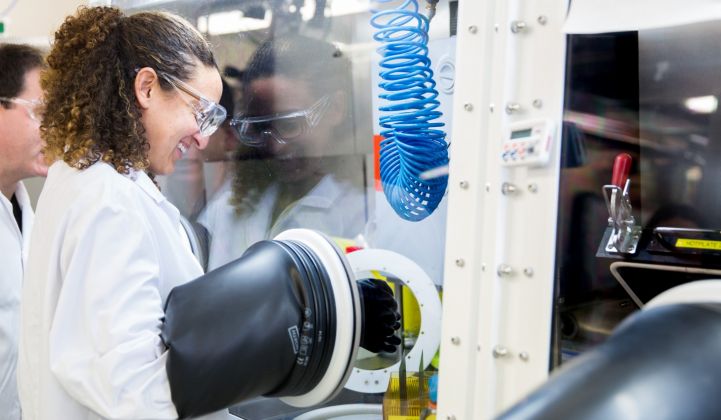Interest in combining solar with wind led several turbine makers to woo the perovskite coating developer Oxford PV in its Series D round, sources said. But Goldwind carried the day thanks to its links to the Chinese market, said Oxford PV’s CTO Chris Case.
“We had choices,” he said, citing “strong interest from multiple large European players.”
But with Goldwind, there’s a "good opportunity" to expand into the Chinese market, Case said. "The combination provides a very interesting opportunity going forward.”
Oxford PV, which is developing a technology aimed at significantly increasing solar cell efficiency, announced £31 million ($41 million) of Series D funding earlier this month.
Goldwind led the financing with an injection of £21 million ($28 million), Case said, with most of the balance coming from existing investors Equinor and Legal & General Capital. These existing investors have been strategic backers of Oxford PV since 2016.
Goldwind’s investment made it the largest equity partner in Oxford PV, but only for a short spell. Within days of the Goldwind announcement, Oxford PV trumpeted an exclusive collaboration agreement with German solar equipment supplier Meyer Burger.
The agreement saw Meyer Burger taking an 18.8 percent stake in Oxford PV, overtaking Goldwind as the largest shareholder in the company, Case said. Meyer Burger also has the option of doubling its investment by the end of 2020.
Under the terms of the agreement, Oxford PV will buy a 200-megawatt Meyer Burger heterojunction manufacturing line for the production of tandem solar cells. The line will be installed at an Oxford PV facility in Brandenburg an der Havel, in Germany, by the end of 2020.
The current funding round, which began in the middle of last year and is not due to close until the end of April, should see Oxford PV through to the end of 2020 as well, Case said.
Breaking solar efficiency records
Oxford PV is aiming to raise the efficiency of solar by coating a traditional silicon cell with a thin layer of transparent perovskite that is tuned to a different wavelength.
Although the maximum solar-to-electric efficiency of each layer, as determined by the Shockley-Queisser limit, is under 34 percent, by having two layers tuned to different wavelengths, it might be possible for a cell to extract a fair amount more energy from sunlight.
In December, Oxford PV set a new world record with a 1-square-centimeter perovskite-silicon tandem solar cell that achieved a 28 percent conversion efficiency, certified by the National Renewable Energy Laboratory.
This compares to a world record for commercially available monocrystalline silicon passivated emitter rear contact (PERC) PV efficiency, set by Longi Solar in January, of just over 24 percent.
Case said Oxford PV was setting new records at the rate of around one a quarter, “and you should expect to see those kinds of improvements on a regular level all the way up into the mid-30s.”
He said it was “not unrealistic” to expect perovskite tandem cells to ultimately reach around 40 percent efficiency. But getting up to 35 percent could likely be achieved with current technology, he said.
Commercial products might lag behind these research milestones by a couple of percentage points in efficiency, said Case.
Wind manufacturing diversification
Oxford PV’s association with Meyer Burger is expected to speed commercialization by giving the perovskite technology developer a tandem cell production line with which to deliver products to market.
Oxford PV would initially be using heterojunction cells as the basis for its tandem products, Case confirmed. The company has yet to decide on a commercialization strategy, though, he said.
With its own production line, the business could manufacture and sell own-label solar cells. It could form a partnership with a manufacturing or distribution partner. Or it could simply offer perovskite cells to third parties on a white-label basis or pursue several of these routes.
The company’s newfound relationship with Goldwind means one of these pathways might be related to wind manufacturing diversification. “Wind is a great renewable resource,” said Case, “but the price trend has flattened out."
That trend has the wind industry a bit concerned — and increasingly interested in solar.




